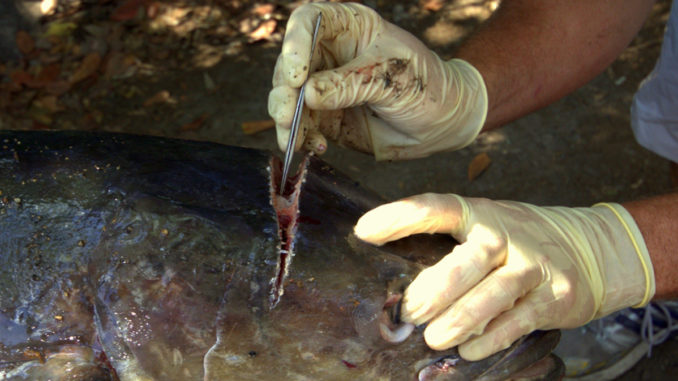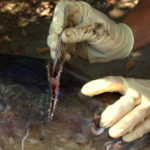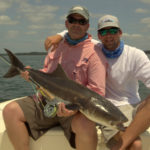
SCDNR relies on anglers to help gather data
Each year, more and more saltwater fisherman enjoy targeting cobia, increasing the strain on the resource. Any reduction in cobia numbers greatly increases the likelihood of the South Atlantic Fisheries Marine Council imposing regulations to protect them, as they have done with several other species in recent years. Such regulations not only limit anglers’ opportunities, they cost the economies of coastal villages needed revenue in already economically difficult times.
Thankfully, the S.C. Department of Natural Resources is taking steps to make sure that fishing for cobia remains just as good — if not better — in years to come. A big part of its efforts rely on involvement from recreational anglers and guides.
“Anyone targeting cobia can get involved,” said SCDNR biologist Justin Yost.
The involvement Yost refers to revolves around sample collection, which started with much help from the North End Charter Fleet on Hilton Head Island.
Fishermen can drop off cobia carcasses at two collection sites: Boat House at 397 Squire Pope Rd. on Hilton Head Island, and the Waddell Mariculture Center at 211 Sawmill Creek Rd. in Bluffton. The SCDNR is also collecting data and samples from cobia at fishing tournaments.
Since 2007, the SCDNR has collected otoliths (ear bones), gonads, DNA, stomach contents, length and width measurements from every cobia provided, if possible.
Otoliths are used to determine age; gonads are used to assess reproduction stage and estimate reproductive rate, and genetic DNA samples provide information on population structure and hatchery contribution. The data collected and discoveries made were vital to the 2012 stock assessment of cobia.
“This research would not have been possible without the help and support of the local community, especially Capt. Jim Clark and the North End Charter Fleet,” Yost said. “From weekend warriors to the professional anglers who make their living on the water, the community has invested their time and efforts toward helping improve our understanding of this important species.”
The research has lead to some interesting findings, perhaps the most important of which is that cobia in the Broad River and Port Royal Sound are a unique population. Cobia found offshore of South Carolina and elsewhere in the Atlantic Ocean are not the same, at least not genetically, as the cobia found inshore.
Cobia that remain offshore migrate north from Florida each spring, but it is not known exactly where our inshore cobia go when not in the Broad River and Port Royal Sound.
Because the SCDNR uses brood stock for juvenile reproduction only from the Port Royal Sound and Broad River, only those offspring are released in the same areas.
Of all the cobia work the SCDNR does, nothing has a greater impact on population than the restocking program.
Restocking efforts started in 2001 at the Waddell Center with a federal grant to refine spawning and juvenile-rearing techniques. Since then, approximately 65,000 juvenile cobia have been released, with 50,000 alone being released into the Port Royal Sound in 2007.
Because it takes a juvenile cobia three years to reach the 33-inch (fork length) size minimum for harvest, it was 2010 before SCDNR could assess the success of their 2007 stocking. What they discovered was that 7.3 percent of all cobia sampled were from that stocking, an impressive number.
But when they compared only the 3-year-old specimens sampled, they found that the stocked fish made up 46 percent of that year class, which is astounding.
In the past few years, many state budgets have shrunk, and South Carolina has been hit hard. More than ever, the SCDNR needs the help of sportsman to keep their programs afloat, and the work with cobia is a shining example of anglers stepping up and pitching in to make a difference.
There is still much to learn about cobia, and most of the information gathered has from estuaries on the southern end of the coast — since that’s where most cobia are caught — but their range is far greater.
Although collection sites are not set up anywhere else on the coast, fishermen can still help. Also, information taken outside of the normal spring and early summer could provide new insight, especially offshore.
For information on the SCDNR’s cobia research and stocking efforts, contact Yost at 843-953-2011 or YostJ@dnr.sc.gov.





Be the first to comment